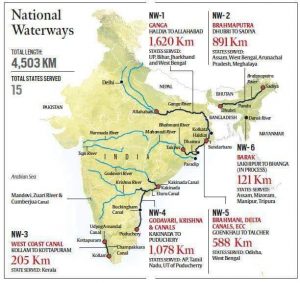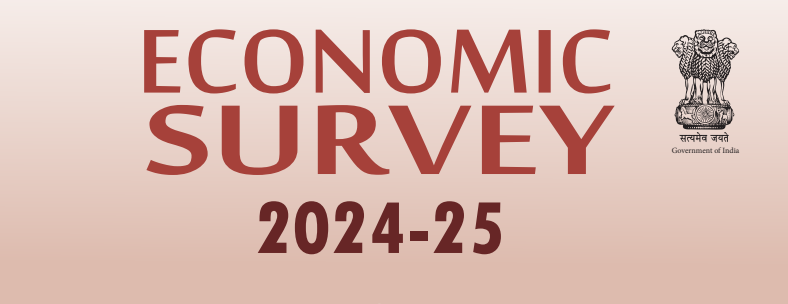THE ECONOMIC DEVELOPMENT
1. NEW PAYMENT SYSTEM FOR FEATURE PHONE USERS:” UPI123PAY”
THE CONTEXT: The Reserve Bank of India, launched the country’s most famous unified payments interface (UPI) service for feature phones. Termed as UPI123PAY, the service will allow 40 crore feature phone users across India to access the payment service.
THE EXPLANATION:
- As of now,UPI was available only across all smartphones in India but with the latest move, feature phone users will also be allowed to send and receive payments.
- The UPI123Pay service is a three-step method to initiate and execute services for users, which will work on phones which do not have an option for internet connection. Presently there are an estimated 40 crore mobile phone users who possess feature phones.
- These users will now be able to undertake a host of transactions by 1. calling an IVR (interactive voice response) number, 2. app functionality in feature phones, 3. missed call-based approach and 4. also proximity sound-based payments.
- Users will be able to make payments to their friends and family, pay their utility bills, recharge FASTags, pay mobile bills and also check their account balances, the central bank said, adding customers will also be able to link bank accounts, set or change UPI PINs.
2. CABINET APPROVES NATIONAL LAND MONETIZATION CORPORATION
THE CONTEXT: The Union Cabinet, chaired by Prime Minister has approved the setting up National Land Monetization Corporation (NLMC),it will be wholly owned Government of India company with an initial authorized share capital of Rs 5000 crore and paid-up share capital of Rs 150 crore.
THE EXPLANATION:
- NLMC will undertake monetization of surplus land and building assets of Central Public Sector Enterprises (CPSEs) and other Government agencies. The proposal is in pursuance of the Budget Announcement for 2021-22.
SIGNIFICANCE?
- At present, CPSEs hold considerable surplus, unused and under used non-core assets in the nature of land and buildings. For CPSEs undergoing strategic disinvestment or closure, monetization of these surplus land and non-core assets is important to unlock their value.
- NLMC will support and undertake monetization of these assets. This will also enable productive utilization of these under-utilized assets to trigger private sector investments, new economic activities, boost local economy and generate financial resources for economic and social infrastructure.
- NLMC is also expected to own, hold, manage and monetize surplus land and building assets of CPSEs under closure and the surplus non-core land assets of Government owned CPSEs under strategic disinvestment.
- Efficiency:NLMC will undertake surplus land asset monetization as an agency function. It is expected that NLMC will act as a repository of best practices in land monetization, assist and provide technical advice to Government in implementation of asset monetization programme.
- Technical Experts: NLMC will have necessary technical expertise to professionally manage and monetize land assets on behalf of CPSEs and other Government agencies. The Board of Directors of NLMC will comprise senior Central Government officers and eminent experts to enable professional operations and management of the company. The Chairman, non-Government Directors of the NLMC will be appointed through a merit-based selection process.
NLMC will be a lean organization with minimal full time staff, hired directly from the market on contract basis. Flexibility will be provided to the Board of NLMC to hire, pay and retain experienced professionals from the private sector.
- Nodal Agency: Department of Public Enterprise, Ministry of Finance, will set up the company and act as its administrative ministry.
3. CABINET NOD FOR MINING NEW MINERALS
THE CONTEXT: The Union Cabinet, chaired by Prime Minister has approved the proposal of the Ministry of Mines for amendment of Second Schedule of the Mines and Minerals (Development and Regulation) Act, 1957 (hereinafter referred to as ‘the Act’) for specifying the rate of royalty in respect of Glauconite, Potash, Emerald, Platinum Group of Metals (PGM), Andalusite, Sillimanite and Molybdenum.
THE EXPLANATION:
- The approval would ensure auction of mineral blocks in respect of Glauconite, Potash, Emerald, Platinum Group of Metals, Andalusite and Molybdenum thereby reducing import of these minerals, generating empowerment opportunity in the mining sector as well as manufacturing sector which will help in ensuring inclusive growth of a large section of the society.
- The approval will lead to import substitution in respect of many important minerals for the economy of the country thereby saving valuable forex reserves. It will reduce country’s foreign dependency through the local production of minerals.
- The Act was amended in 2015 to usher in new regime of granting mineral concessions through auction to ensure transparency and non-discrimination in allocation of mineral wealth of the country.
- To give further impetus to the mineral sector, the Act has been further amended in 2021. Under the reforms, the Government has given major boost to auction of mineral blocks, increasing production, improving ease of doing business in the country and increasing contribution of mineral production to Gross Domestic Product (GDP).
What is the Need?
In the last 4-5 years, Central Agencies like Geological Survey of India and Mineral Exploration Corporation Ltd. have carried out exploration and handed over reports to the State Governments of several blocks of minerals which are hitherto not mined in the country.
When it comes to minerals such as Glauconite/ Potash, Emerald, Platinum Group of Metals (PGM), Andalusite and Molybdenum, the country is totally dependent on import of these minerals for meeting our requirements.
As a major step towards mineral self-sufficiency, many State Governments have identified such mineral blocks for auction. However, the rate of royalty for these minerals were not separately provided and was not appropriate for giving impetus to mining of these minerals.
Minerals like Glauconite and Potash are used as fertilizer in agriculture. Platinum Group of Metals (PGM) are high value metal used in various industries and new innovative applications. Minerals like Andalusite, molybdenum are vital minerals used in industrial applications.
Value Addition:
The Mines and Minerals (Development and Regulation) Amendment Bill, 2021
Highlights:
- Removal of restriction on end-use of minerals: The Act empowers the central government to reserve any mine (other than coal, lignite, and atomic minerals) to be leased through an auction for a particular end-use (such as iron ore mine for a steel plant). Such mines are known as captive mines. The Bill provides that no mine will be reserved for particular end-use.
- Sale of minerals by captive mines: The Bill provides that captive mines (other than atomic minerals) may sell up to 50% of their annual mineral production in the open market after meeting their own needs. The central government may increase this threshold through a notification. The lessee will have to pay additional charges for mineral sold in the open market.
- Auction by the central government in certain cases: Under the Act, states conduct the auction of mineral concessions (other than coal, lignite, and atomic minerals). Mineral concessions include mining lease and prospecting license-cum-mining lease. The Bill empowers the central government to specify a time period for completion of the auction process in consultation with the state government. If the state government is unable to complete the auction process within this period, the auctions may be conducted by the central government.
- National Mineral Exploration Trust (NMET): The Bill provides for the constitution of a Statutory body named the National Mineral Exploration Trust (NMET). It will see the overall functioning of the mining sector.
- National Mineral Index(NMI): The Bill proposes to introduce an index-based mechanism by developing a National Mineral Index(NMI). Various statutory payments and future auctions can use the National Mineral Index in the future.
4. THE INLAND WATER SYSTEM FOR THE NORTHEAST
THE CONTEXT: The Indian government has undertaken the ambitious Jal Marg Vikas Project (JMVP) with an investment of about Rs 4,600 crore for the capacity augmentation of NW-1 (Ganga) for safe and sustainable movement of vessels of up to 2000 tonnes. After the MV Lal Bahadur Shastri’s journey, Inland Waterway Authority of India is looking to run regular scheduled services on these waterway routes.
THE EXPLANATION:
- The docking of the vessel carrying 200 MT of food grains for the FCI has rekindled hope for the inland water transport system which the landlocked northeast depended on heavily before India’s independence in 1947.
- It passed through Bhagalpur, Manihari, Sahibganj, Farakka, Tribeni, Kolkata, Haldia, Hemnagar in India, Khulna, Narayanganj, Sirajganj and Chilmari in Bangladesh and again to India on National Waterway-2 (NW2, river Brahmaputra) through Dhubri and Jogighopa covering 2,350 km.
How did the water cargo service through Bangladesh come about?
- The resumption of cargo transport service through the waterways in Bangladesh has come at a cost since the Protocol on Inland Water Transit and Trade was signed between the two countries.
- India has invested 80% of ₹305.84 crore to improve the navigability of the two stretches of the IBP (Indo-Bangladesh Protocol) routes — Sirajganj-Daikhowa and Ashuganj-Zakiganj in Bangladesh.
Indo-Bangladesh Protocol
The Inland Water Transit & Trade exists between India and Bangladesh under which inland vessels of one country can transit through the specified routes of the other country.
The existing protocol routes are:
- Kolkata-Pandu-Kolkata
- Kolkata-Karimganj – Kolkata
- Rajshahi-Dhulian-Rajshahi
- Pandu-Karimganj-Pandu
For inter-country trade, certain ports of call have been designated in each country.
These Ports of call generally act as an intermediate stops for a ship on its scheduled journey for unloading and loading of cargo or taking on supplies or fuel and maintenance and refurbishing is carried out.
These are:
India
- Haldia (West Bengal)
- Kolkata (West Bengal)
- Pandu (Assam)
- Karimganj (Assam)
- Silghat (Assam)
Bangladesh
- Narayanganj
- Khulna
- Mongla
- Sirajganj
- Ashuganj

Significance:
- The waterways will not only remove geographical hindrance but also provide an economical and convenient transportation for the businesses and people of the region.
- In line with India’s “Act East” policy, the Indian Ministry of Ports, Shipping and Waterways has taken up several infrastructure projects on National Waterway-1, IndoBangladesh Protocol route and NW2, through the Inland Waterways Authority of India (IWAI) to improve connectivity with the Northeastern region through waterways via Bangladesh.
National Waterway:
In 2016, the government notified 111 inland waterways as National Waterways of India under the National Waterways Act, 2016. Of these, 13 National Waterways are operational for shipping and navigation and cargo/passenger vessels.
The Inland Waterways Authority of India under the Ministry of Shipping is developing the National Waterways for commercial navigation, including with assistance from the World Bank.

THE GOVERNMENT SCHEMES/INITIATIVES IN NEWS
5. GLOBAL CENTRE FOR TRADITIONAL MEDICINE IN INDIA
THE CONTEXT: The Union Cabinet, chaired by Prime Minister has approved the establishment of the WHO Global Centre for Traditional Medicine (WHO GCTM) in Jamnagar, Gujarat by signing a Host Country agreement between the Government of India and the World Health Organization (WHO).
THE EXPLANATION:
The WHO GCTM will be established in Jamnagar under the Ministry of AYUSH. This would be the first and only global outposted Centre (office) for traditional medicine across the globe.
Benefits:
- To position AYUSH systems across the globe
- To provide leadership on global health matters pertaining to traditional medicine.
- To ensure quality, safety and efficacy, accessibility and rational use of traditional medicine.
- To develop norms, standards, and guidelines in relevant technical areas, tools and methodologies, for collecting data undertaking analytics, and assess impact. Envisage WHO TM Informatics centre creating a collaborative of existing TM Data banks, virtual libraries, and academic and research institutes.
- To develop specific capacity building and training programmes in the areas of relevance to the objectives and conduct training programmes in campus, residential, or web-based, and through partnerships with the WHO Academy and other strategic partners.
The WHO GCTM would provide leadership on all global health matters related to traditional medicine as well as extend support to member countries in shaping various policies related to traditional medicine research, practices and public health.
The Ministry of AYUSH has collaborated with WHO on many fronts including developing benchmarks documents on training and practice of Ayurveda and Unani System, introducing a second module in the Traditional Medicine Chapter of the International classification of Diseases-11, developing apps like M-yoga, supporting the work of International Pharmacopeia of Herbal Medicine (IPHM) and other research studies etc.
Significance:
- Traditional medicine is a key pillar of health care delivery systems and plays a crucial role in maintaining good health and well-being. Safe and effective traditional medicine will play a significant role in ensuring all people have access to quality essential health care services and safe, effective and affordable essential medicines as the world approach the ten-year milestone for Sustainable Development Goals in 2030.
- The WHO-GCTM will identify various challenges faced by the countries in regulating, integrating and further positioning Traditional Medicine in respective countries.
| Value Addition:
What is National AYUSH Mission (NAM)? · Department of AYUSH, Ministry of Health and Family Welfare, Government of India has launched National AYUSH Mission (NAM) during 12th Plan for implementing through States/UTs. · The basic objective of NAM is to promote AYUSH medical systems through cost effective AYUSH services, strengthening of educational systems, facilitate the enforcement of quality control of ASU &H drugs and sustainable availability of ASU & H raw-materials. · It envisages flexibility of implementation of the programmes which will lead to substantial participation of the State Governments/UT. · The NAM contemplates establishment of a National Mission as well as corresponding Missions in the State level. |
THE PRELIMS PRACTICE QUESTIONS
QUESTIONS OF THE DAY 10TH MARCH 2022
Q. Which of the following pairs is/are incorrectly matched?
- National Waterway 1 – Ganga River
- National Waterway 3 – East Coast Canal
- National Waterway 5 – West Coast Canal
Select the correct answer using the code given below:
a) 1 only
b) 1 and 2 only
c) 3 only
d) 2 and 3 only
ANSWER FOR 9th MARCH 2022
Q1. Answer: D
Explanation:
Both the statements are correct
SARKARIA COMMISSSION
Recommendations on Appointment of Governor:
- should be an eminent person.
- must be a person from outside the State.
- not have participated in active politics at least for some time before his appointment.
- he should be a detached person and not too intimately connected with the local politics of the State.
- he should be appointed in consultation with the Chief Minister of the State, Vice-President of India and the Speaker of the Lok Sabha.
- His tenure of office must be guaranteed and should not be disturbed except for extremely compelling reasons and if any action is to be taken against him, he must be given a reasonable opportunity for showing cause against the grounds on which he is sought to be removed. In case of such termination or resignation of the Governor, the Government should lay before both the Houses of Parliament a statement explaining the circumstances leading to such removal or resignation, as the case may be.
- After demitting his office, the person appointed as Governor should not be eligible for any other appointment or office of profit under the Union or a State Government except for a second term as Governor or election as Vice-President or President of India, as the case may be and
- At the end of his tenure, reasonable post-retirement benefits should be provided.
- The Punchhi commission recommended that Governor shall have fixed tenure.




